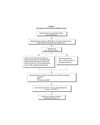Searching for clinical prediction rules in MEDLINE
- PMID: 11418546
- PMCID: PMC130084
- DOI: 10.1136/jamia.2001.0080391
Searching for clinical prediction rules in MEDLINE
Abstract
Objectives: Clinical prediction rules have been advocated as a possible mechanism to enhance clinical judgment in diagnostic, therapeutic, and prognostic assessment. Despite renewed interest in the their use, inconsistent terminology makes them difficult to index and retrieve by computerized search systems. No validated approaches to locating clinical prediction rules appear in the literature. The objective of this study was to derive and validate an optimal search filter for retrieving clinical prediction rules, using the National Library of Medicine's MEDLINE database.
Design: A comparative, retrospective analysis was conducted. The "gold standard" was established by a manual search of all articles from select print journals for the years 1991 through 1998, which identified articles covering various aspects of clinical prediction rules such as derivation, validation, and evaluation. Search filters were derived, from the articles in the July through December issues of the journals (derivation set), by analyzing the textwords (words in the title and abstract) and the medical subject heading (from the MeSH Thesaurus) used to index each article. The accuracy of these filters in retrieving clinical prediction rules was then assessed using articles in the January through June issues (validation set).
Measurements: The sensitivity, specificity, positive predictive value, and positive likelihood ratio of several different search filters were measured.
Results: The filter "predict$ OR clinical$ OR outcome$ OR risk$" retrieved 98 percent of clinical prediction rules. Four filters, such as "predict$ OR validat$ OR rule$ OR predictive value of tests," had both sensitivity and specificity above 90 percent. The top-performing filter for positive predictive value and positive likelihood ratio in the validation set was "predict$.ti. AND rule$."
Conclusions: Several filters with high retrieval value were found. Depending on the goals and time constraints of the searcher, one of these filters could be used.
Figures


Similar articles
-
Developing optimal search strategies for detecting sound clinical prediction studies in MEDLINE.AMIA Annu Symp Proc. 2003;2003:728-32. AMIA Annu Symp Proc. 2003. PMID: 14728269 Free PMC article.
-
Developing optimal search strategies for detecting clinically sound causation studies in MEDLINE.AMIA Annu Symp Proc. 2003;2003:719-23. AMIA Annu Symp Proc. 2003. PMID: 14728267 Free PMC article.
-
Developing optimal search strategies for detecting clinically sound prognostic studies in MEDLINE: an analytic survey.BMC Med. 2004 Jun 9;2:23. doi: 10.1186/1741-7015-2-23. BMC Med. 2004. PMID: 15189561 Free PMC article.
-
Search filters can find some but not all knowledge translation articles in MEDLINE: an analytic survey.J Clin Epidemiol. 2012 Jun;65(6):651-9. doi: 10.1016/j.jclinepi.2011.10.014. Epub 2012 Mar 16. J Clin Epidemiol. 2012. PMID: 22424986 Review.
-
Evaluation of methodological search filters--a review.Health Info Libr J. 2004 Sep;21(3):148-63. doi: 10.1111/j.1471-1842.2004.00511.x. Health Info Libr J. 2004. PMID: 15318913 Review.
Cited by
-
Chapter 12: systematic review of prognostic tests.J Gen Intern Med. 2012 Jun;27 Suppl 1(Suppl 1):S94-101. doi: 10.1007/s11606-011-1899-y. J Gen Intern Med. 2012. PMID: 22648680 Free PMC article. Review.
-
Optimal search strategies for identifying sound clinical prediction studies in EMBASE.BMC Med Inform Decis Mak. 2005 Apr 29;5:11. doi: 10.1186/1472-6947-5-11. BMC Med Inform Decis Mak. 2005. PMID: 15862125 Free PMC article.
-
Validity of British Thoracic Society guidance (the CRB-65 rule) for predicting the severity of pneumonia in general practice: systematic review and meta-analysis.Br J Gen Pract. 2010 Oct;60(579):e423-33. doi: 10.3399/bjgp10X532422. Br J Gen Pract. 2010. PMID: 20883616 Free PMC article. Review.
-
A simple method to adjust clinical prediction models to local circumstances.Can J Anaesth. 2009 Mar;56(3):194-201. doi: 10.1007/s12630-009-9041-x. Epub 2009 Feb 7. Can J Anaesth. 2009. PMID: 19247740 Free PMC article.
-
Validation of Risk Prediction Models to Detect Asymptomatic Carotid Stenosis.J Am Heart Assoc. 2020 Apr 21;9(8):e014766. doi: 10.1161/JAHA.119.014766. Epub 2020 Apr 20. J Am Heart Assoc. 2020. PMID: 32310014 Free PMC article.
References
-
- Laupacis A, Sekar N, Stiell IG. Clinical prediction rules: a review and suggested modifications of methodological standards. JAMA. 1997;277:488–94. - PubMed
-
- Wasson JH, Sox HC, Neff RK, Goldman L. Clinical prediction rules: applications and methodological standards. N Engl J Med. 1985;313:793–9. - PubMed
-
- McGinn TG, Guyatt GH, Wyer PC, Naylor CD, Stiell IG, Richardson WS. Users' guides to the medical literature, XXII: How to use articles about clinical decision rules. Evidence-based Medicine Working Group. JAMA. 2000;284:79–84. - PubMed
-
- van der Weijden T, Ijzermans CJ, Dinant GJ, van Duijn NP, de Vet R. Buntinx F. Identifying relevant diagnostic studies in medline. The diagnostic value of the erythrocyte sedimentation rate (ESR) and dipstick as an example. Fam Pract. 1997;14:204–8. - PubMed
Publication types
MeSH terms
LinkOut - more resources
Full Text Sources

